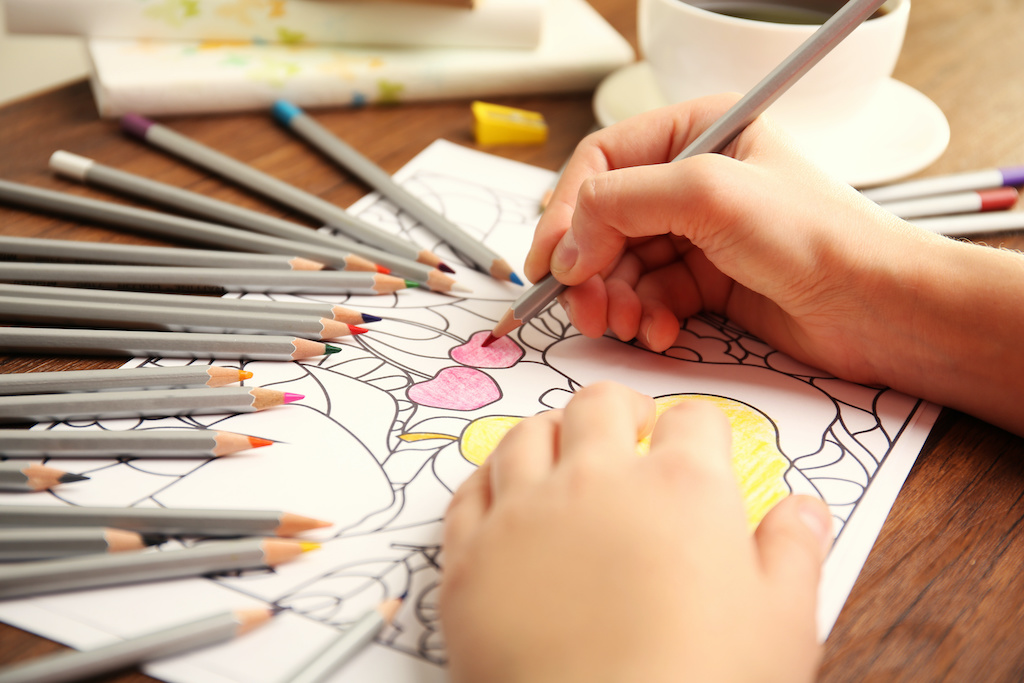
Blending and Shading: Advanced Coloring Techniques for Older Kids and Adults
Do you love coloring but find yourself yearning for more advanced techniques to take your art to the next level? Blending and shading are two fundamental skills that can add depth and realism to your coloring creations. In this article, we will explore the basics of blending and shading, discuss the materials you'll need, and provide step-by-step guides for mastering these techniques. Whether you're an older child or an adult, these advanced coloring techniques will help you elevate your artwork and bring it to life.
Understanding the Basics of Blending and Shading
Blending and shading are essential techniques in the world of art. Blending refers to the process of combining different colors seamlessly, creating smooth transitions and gradients. It allows you to achieve a sense of harmony and depth in your coloring. Shading, on the other hand, involves adding darker tones to create highlights and shadows, giving your artwork a three-dimensional appearance.
Blending is crucial in art as it helps create smooth color transitions, making your artwork look more polished and realistic. By blending colors together, you can achieve subtle gradients and avoid harsh lines, giving your drawings a professional touch. It takes practice and patience, but the end result is well worth it.
When it comes to blending, there are various techniques you can explore. One popular method is called "wet-on-wet" blending, where you apply wet paint or ink to a wet surface. This allows the colors to mix and merge naturally, creating beautiful and seamless transitions. Another technique is "dry brush" blending, where you use a dry brush to lightly blend colors together, creating a more textured effect. Experimenting with different blending techniques will help you find the style that suits your artwork best.
The Importance of Blending in Art
Blending is not only important for creating smooth color transitions, but it also plays a significant role in creating visual harmony in your artwork. When colors blend seamlessly, they create a sense of unity and balance. This can be particularly useful when working with complex or vibrant color palettes.
Imagine a landscape painting with a beautiful sunset. Blending warm oranges and yellows together can create a stunning gradient that mimics the natural beauty of the setting sun. Without blending, the colors may appear flat and disjointed, lacking the depth and richness that blending can provide.
Additionally, blending can be used to create visual effects and illusions. By skillfully blending colors, you can create the illusion of texture, such as the softness of fur or the roughness of a tree bark. Blending can also be used to create a sense of movement, as colors seamlessly transition from one shade to another.

Different color shades can be applied on top of each other creating a smooth blending. Adobe Stock/Africa Studio
The Role of Shading in Creating Depth
Shading is what brings your coloring to life, adding depth and dimension to your artwork. By understanding how light and shadow interact, you can create the illusion of form and make your drawings appear more three-dimensional. Learning various shading techniques will allow you to add volume and realism to your coloring pages.
There are different shading techniques you can explore, depending on the effect you want to achieve. One common technique is called "hatching," where you create parallel lines to indicate shadow and form. Cross-hatching involves adding intersecting lines to create a denser shadow. Another technique is "smudging," where you use your finger or a blending tool to soften and blend the shading, creating a smoother transition between light and shadow.
Understanding light sources is crucial when it comes to shading. By identifying the direction of light in your artwork, you can determine where the shadows should fall and how they should be rendered. Shadows can add depth and realism to your drawings, making objects appear more solid and grounded.
Experimenting with different shading techniques and observing real-life objects can help you develop a better understanding of how light and shadow work. By practicing shading, you can enhance your artwork and take it to the next level.
Materials Needed for Advanced Coloring Techniques
Before diving into advanced coloring techniques, it's essential to have the right tools at your disposal. Here are the materials you'll need to get started:
Choosing the Right Coloring Tools
Invest in high-quality colored pencils, markers, or pastels, depending on your preference. Look for vibrant pigments that blend well together and provide smooth coverage. Experiment with different brands to find the ones that suit your style and budget.

Colored pencils are ideal for blending. Adobe Stock/Africa Studio
Understanding the Role of Different Paper Types
The type of paper you use greatly affects your coloring experience. Consider using smooth, heavyweight paper specifically designed for coloring. These papers prevent color bleed and allow for precise blending and shading. Experiment with different textures and finishes to find the one that works best for you.
Mastering the Art of Color Blending
Now that you have the essential materials, it's time to dive into the world of color blending. Follow these step-by-step guidelines to achieve beautiful blended effects:
Step-by-Step Guide to Successful Color Blending
1. Start with two or more colors that you want to blend together. Choose colors that are adjacent on the color wheel for a harmonious result.
2. Apply the lighter color in a small area of your coloring page.
3. Layer the darker color over the lighter color, making sure to overlap slightly.
4. Use a medium pressure and circular motions to blend the colors together, gradually transitioning from one to the other.
5. Repeat the process, layering and blending until you achieve the desired effect.
Common Mistakes to Avoid While Blending
Blending can be a tricky technique to master, but with practice, you'll become more confident. Avoid these common mistakes for smoother blending:
- Avoid applying too much pressure while blending, as it can cause waxy buildup and create uneven patches.
- Start with light layers and gradually build up the colors, ensuring a gradual transition.
- Use a light touch and small circular motions to blend, creating smooth color transitions.

Too much pressure is to be avoided. Adobe Stock/Africa Studio
Techniques for Effective Shading
Shading gives your coloring depth and dimension, making your artwork appear realistic. Here are a few techniques to enhance your shading skills:
Understanding Light and Shadow in Shading
Before shading, it's essential to understand how light interacts with objects. Study the interplay of light and shadow and observe how it changes the appearance of various objects. This knowledge will help you create realistic shading effects.
Shading Techniques for Different Textures
Experiment with different shading techniques to add texture and realism to your artwork:
- Hatching: Create parallel lines close together to add depth and texture.
- Crosshatching: Overlap parallel lines in a crisscross pattern for a more intricate texture.
- Layering: Gradually build up layers of color to achieve smooth shading.
- Blending with a Tortillon: Use a tortillon, a rolled paper tool, to blend and smudge colors together seamlessly.
Tips and Tricks for Enhancing Your Coloring Skills
Here are a few additional tips to help you enhance your coloring skills:
Maintaining Consistency in Your Coloring
Consistency is key when coloring. Pay attention to your strokes, keeping them even and in the same direction. This will give your artwork a more polished and professional look.
Experimenting with Different Coloring Styles
Don't be afraid to step outside your comfort zone and try new coloring styles. Explore different techniques, such as stippling or pointillism, to add unique effects to your artwork. Embrace your creativity and let it shine.
With these advanced coloring techniques, you can take your art to new heights. Blending and shading will bring depth, realism, and vibrancy to your artwork. Remember, practice makes perfect, so don't be discouraged if it takes time to master these techniques. Enjoy the process, explore your creativity, and let your colored creations dazzle the world!
